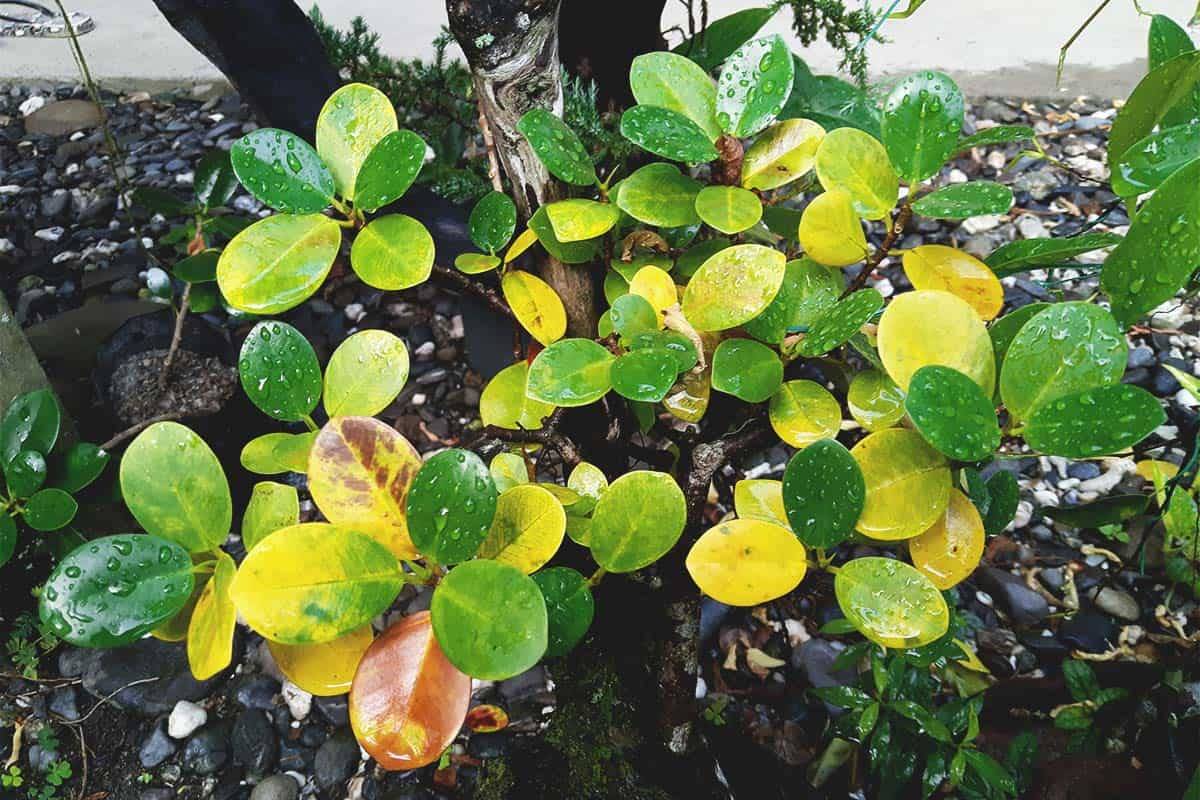
Yellowing leaves on your houseplants can be caused due to a lot of reasons. You can identify and correct the problem once the cause is clear. Sometimes the issue is more confusing. You'll have to try one item at a time until your plant improves in these circumstances. Even if the problem is solved, the yellow leaves will eventually fall off.
Don't worry; if the plant recovers its health, new leaves can sprout during the next growing season. Plants require a lot of patience to flourish. Wait and watch what happens after you've done your best to rule out these common reasons for yellowing leaves. Here are some reasons why your plants could be turning yellow and how you can fix it:
Moisture stress
The most common cause of plant leaf yellowing is moisture stress. Overwatering or under watering is the cause of this. If you have a plant with yellow leaves, first inspect the soil in the container to see if it is dry. If you think the problem is under watering, give the plant more water and place the pot on a plate to catch any excess water so the roots can dry out.
Overwatering, on the other hand, may cause the leaves to become yellow. You have been overwatering the plant if the soil feels too wet. The solution is simple in this case: use less water or apply it less frequently.
Insufficient light levels
Light levels are inadequate. Plants that don't get enough light will usually start to yellow their lower leaves before shedding them. There's a hint you may look for if you're having problems with this. A yellowing plant will normally yellow on the side farthest from the light source due to a lack of light.
The leaves near the window, for example, absorb all of the light and block the opposite side. Rotating the pot once a week to allow natural light to reach all sides is a great way to address this.
In this case, consider moving the plant to a more sunny location and watch how it reacts. You may need to install an artificial plant light if your home lacks natural light, especially in the winter.
Damaged or Compacted Roots
Various reasons, such as incorrect digging, root rot, and other illnesses, can cause root damage. Injured roots may struggle to provide the nutrition your plants require. A small container with large plants is usually the cause of compacted roots. Outside, compacted landscape soil suffocates water, oxygen, and nutrient circulation.
As a result, in rare situations, the roots will fail to function effectively, resulting in yellow leaves. Slide the plant out of its pot carefully to check for damaged or compacted roots. The decomposing roots will emit a foul odor. If the roots are significantly injured, you must replace the plant.
To avoid root compaction, repot your plants in larger containers with enough drainage. By using landscape plants to aerate the soil in your garden, you can reduce soil compaction. Organic material and organic mulch should be used on the planting grounds.
Sudden Temperature Changes
Dry, damp, cold, or hot air can alter the photosynthetic process and the plant's growth. Indoor plants can be stressed by temperature changes, and prolonged exposure to chilly winds from windows or nearby air conditioners can escalate the situation.
If your plant is exposed to fast changes in pressure or temperature, its leaves will most likely resemble those of an underwatered plant. If you suspect a temperature concern, remove your plant from air conditioners, open or draughty windows, and any entrances that lead to the outdoors.
Maintain a temperature of 65 to 75 degrees Fahrenheit and a humidity level of 40 to 50 percent in its surroundings going forward.
Imbalance in nutrition
Nutritional imbalance Plants in pots require more nutrition than plants in the landscape. They're probably lacking in phosphorus, nitrogen, and potassium. Those elements are commonly found in indoor plant fertilizers, and fertilizing once a month is recommended.
Many plants convey details about what they need. When a plant is deficient in nitrogen, for example, the lower, older leaves yellow first, with new growth appearing lighter green. Yellow margins suggest a potassium deficiency, while yellowing within the veins of older leaves indicates a magnesium deficiency. Iron deficiency first manifests itself on the younger leaves.
If you can't pinpoint which nutrient is missing, don't panic; houseplant fertilizers can manage a wide range of nutrients.
Aging of plants
It's normal for a few leaves to turn yellow and even fall off as a plant matures and grows more leaves. A single yellow leaf isn't the reason for concern if your plant appears to be in good health overall. Yellow leaves, on the other hand, can be bothersome to some people. Removing the yellow leaves may be appropriate for some plants that prefer to be clipped back on a regular basis.
Consider whether the plant you're working with can benefit from pruning. Cut the yellow areas to encourage new growth if this is the case.
















